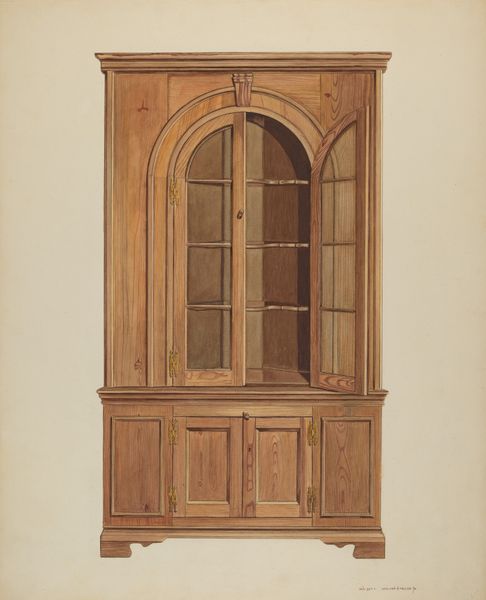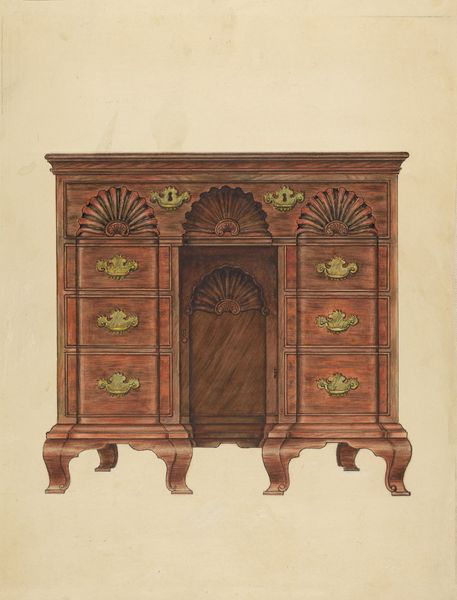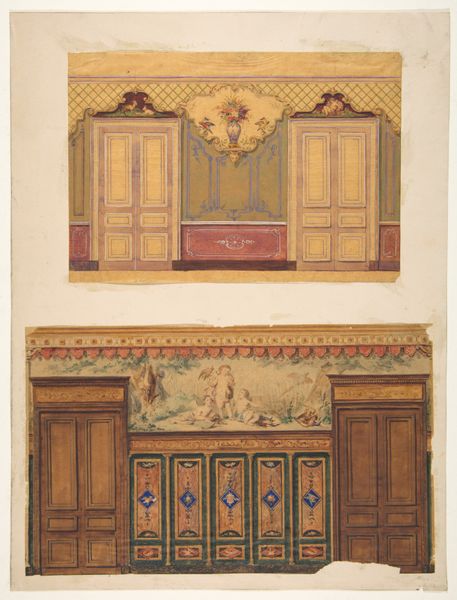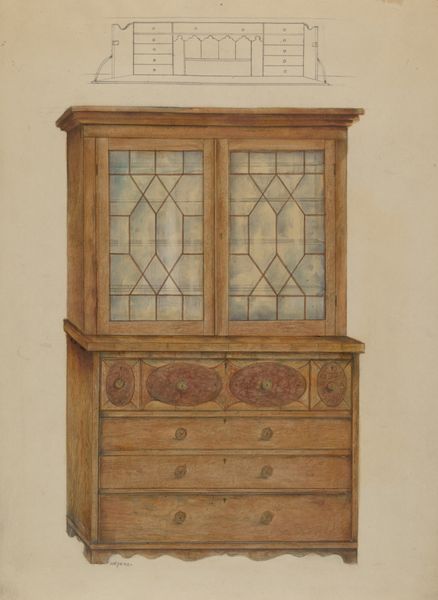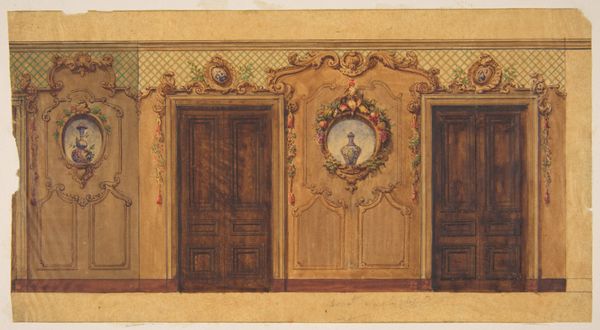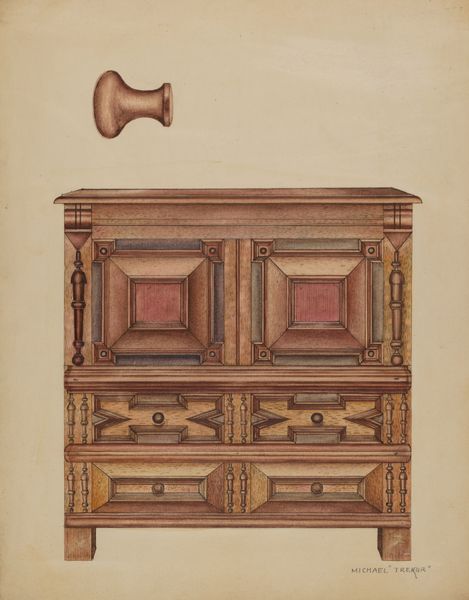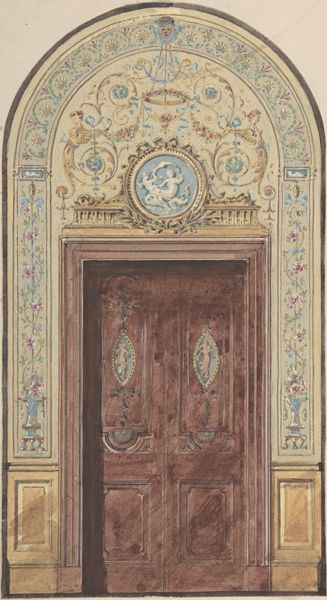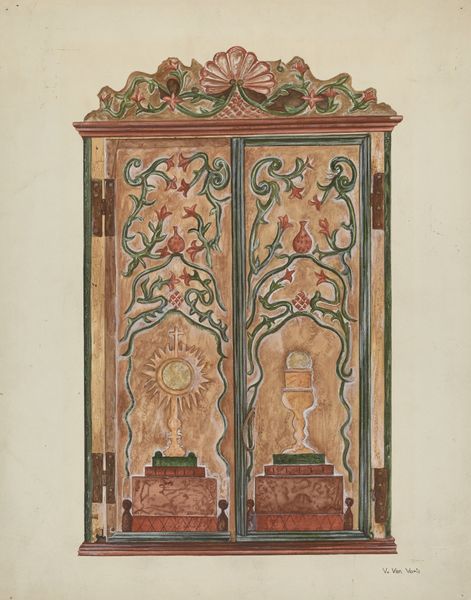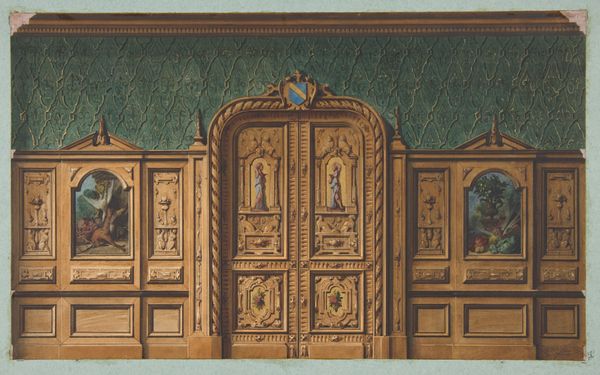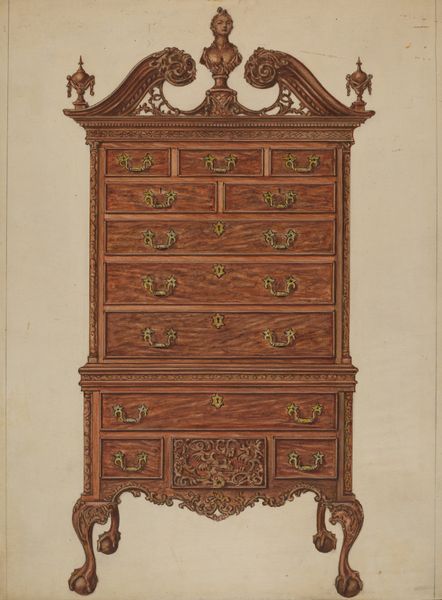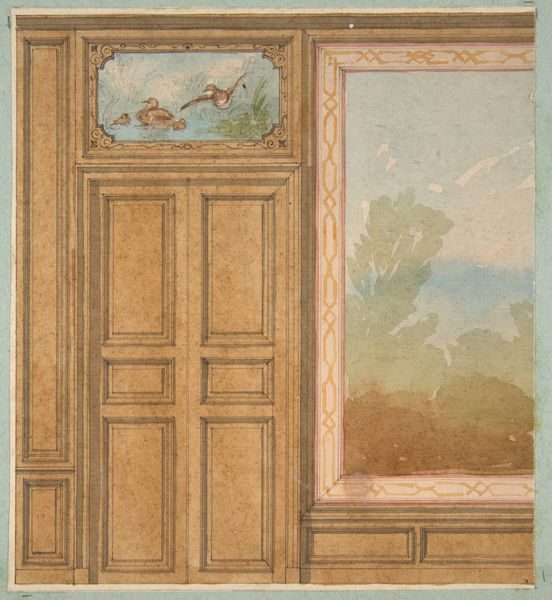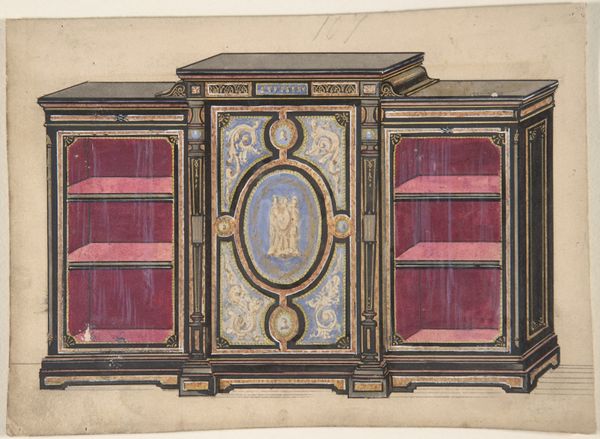
Design for the decoration of a room with a large wood-paneled cupboard surmounted by the monogram: H 1830 - 1897
0:00
0:00
drawing, tempera, print, wood, pen
#
drawing
#
tempera
# print
#
wood
#
pen
Dimensions: sheet: 7 13/16 x 7 1/2 in. (19.8 x 19 cm)
Copyright: Public Domain
Editor: Here we have Jules-Edmond-Charles Lachaise’s "Design for the decoration of a room with a large wood-paneled cupboard surmounted by the monogram: H," created sometime between 1830 and 1897. The piece incorporates drawing, tempera, print, wood, and pen. The detailing is astounding, but it feels a bit rigid. What do you see in this design? Curator: Note how Lachaise orchestrates our gaze through the calculated placement of form and texture. The symmetrical paneling below offers a rigid structure. Above that, a frieze animates the space. Notice how the artist directs your eye upwards with an interplay between angular carved elements and playful, fleshy figures. Editor: It does draw you up. I initially saw rigidity, but there’s movement too. Why does the wood grain choice matter here? Curator: Consider the wood grain as more than mere material. Lachaise manipulates the texture of the wood itself—its inherent patterns—as a visual element, a vital contributor to the overall composition. It introduces dynamism within the otherwise strict geometry. Note the contrast, as well, between smooth panels and the richly carved crests. How does this affect your impression? Editor: The contrast definitely adds layers. I'm beginning to appreciate how the artist juxtaposes flat surfaces with intricate carvings. So the surface detail adds complexity. Curator: Precisely! Through this study, one may decode Lachaise’s calculated method: constructing meaning via material, texture, and arrangement. I'm happy to see your perspective evolving, as is design itself. Editor: This exercise in observation has reshaped how I view interior design renderings. Thank you.
Comments
No comments
Be the first to comment and join the conversation on the ultimate creative platform.
